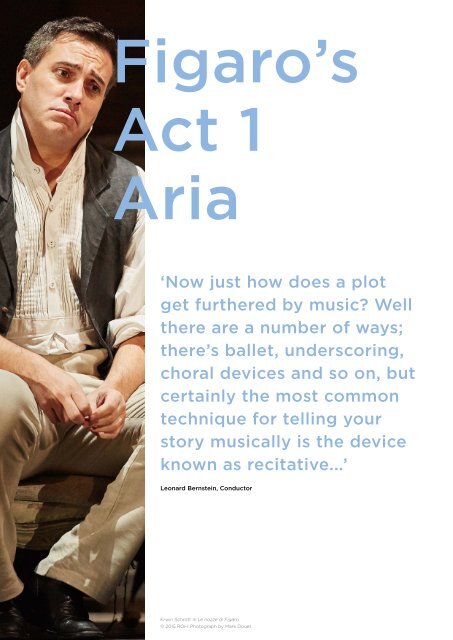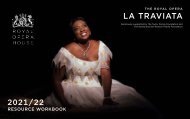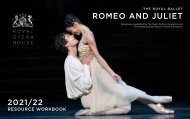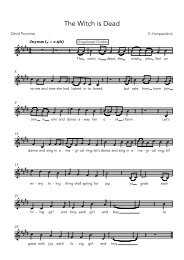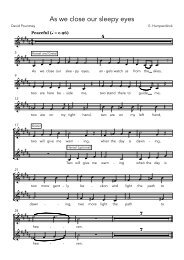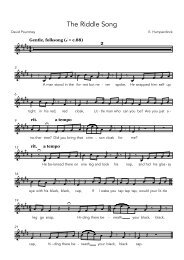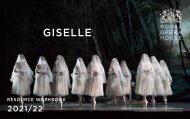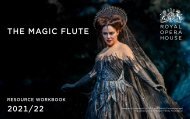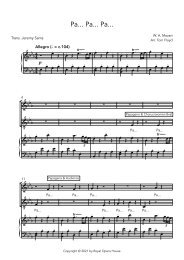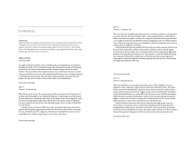ROH_Figaro_WebReadyDocument
- No tags were found...
Create successful ePaper yourself
Turn your PDF publications into a flip-book with our unique Google optimized e-Paper software.
<strong>Figaro</strong>’s<br />
Act 1<br />
Aria<br />
‘Now just how does a plot<br />
get furthered by music? Well<br />
there are a number of ways;<br />
there’s ballet, underscoring,<br />
choral devices and so on, but<br />
certainly the most common<br />
technique for telling your<br />
story musically is the device<br />
known as recitative...’<br />
Leonard Bernstein, Conductor<br />
In The Marriage of <strong>Figaro</strong>, characters sing both recitatives and arias.<br />
In a recitative, passages of dialogue are performed in a semi-sung,<br />
semi-spoken way using the rhythms and features of ordinary speech.<br />
While represented on the page in traditional musical notation,<br />
performers are free to interpret phrases at will, assisted by skeletal<br />
chordal accompaniment from a keyboard instrument. Recitatives<br />
are often where the action happens – quarrels occur, stories are told,<br />
characters confess secrets – and so their purposes are varied; to further<br />
the storyline, to present conversations between characters or even to<br />
enable a harmonic transition to a new key.<br />
The action and forward momentum generated by recitatives contrast<br />
with the more reflective and lyrical arias with which they are typically<br />
alternated. In these formalised songs, solo characters reflect on their<br />
situation, emotions and motives, often with much repetition of text<br />
and phrasing. Arias give singers the chance to demonstrate the extent<br />
of their vocal capabilities, and are accompanied by the full orchestra.<br />
The nature of operatic story-telling means that characters sing both<br />
recitatives and arias, often in a seamlessly flowing musical progression.<br />
The audience can connect with characters at a more literal, dialoguelevel<br />
while empathising with their emotional situation at significant<br />
points in the storyline.<br />
16<br />
Erwin Schrott in Le nozze di <strong>Figaro</strong><br />
© 2015 <strong>ROH</strong>. Photograph by Mark Douet<br />
17


